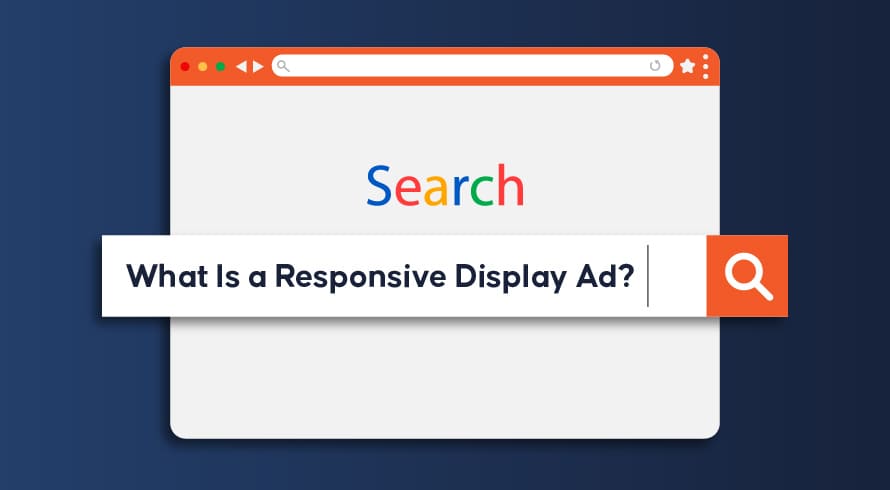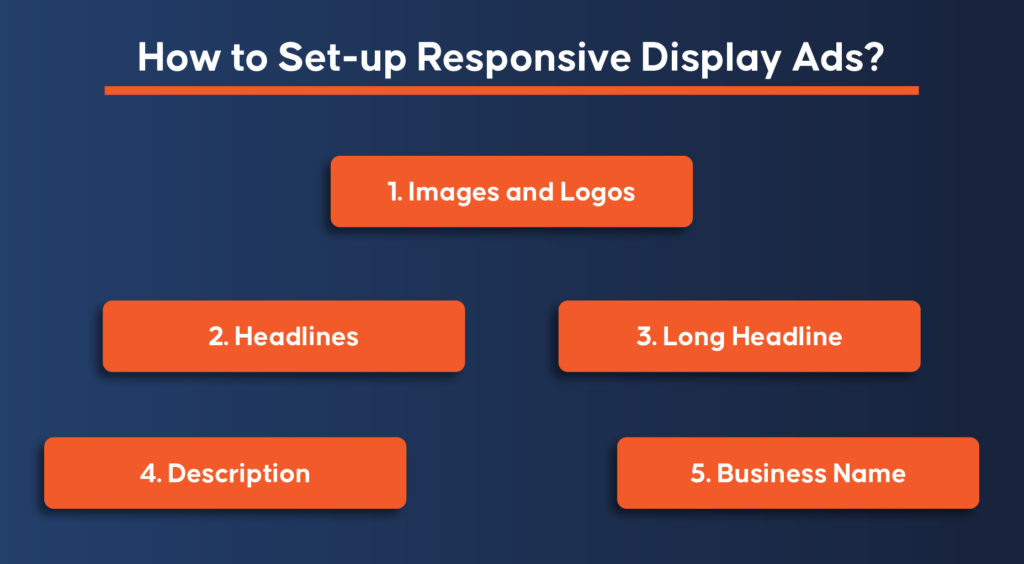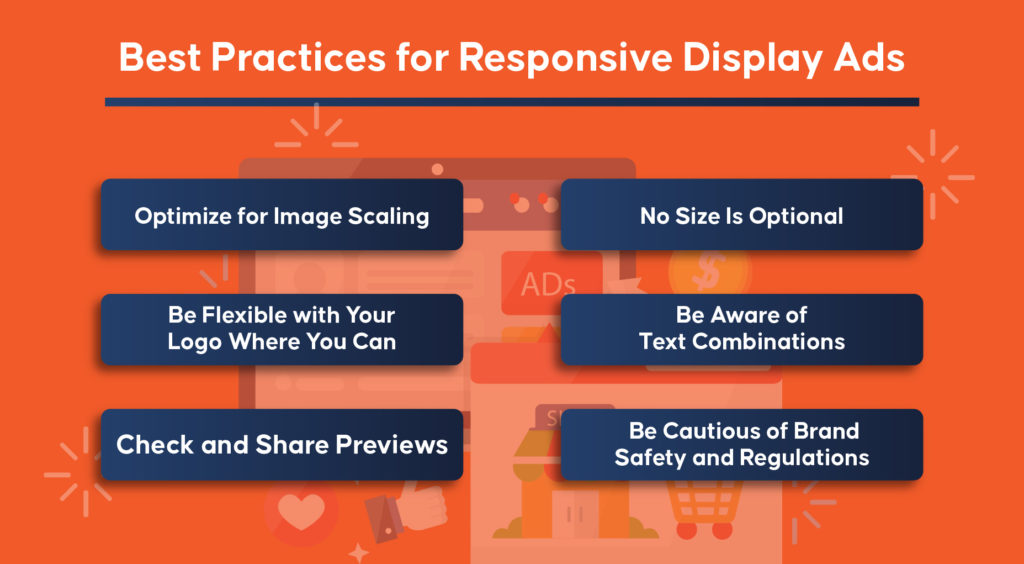Inquivix HQ
1-903, 18 Eonju-ro 146-gil,
Gangnam-gu, Seoul, Korea
06057

Google Ads has focused on continuously improving their interface for display ad campaigns, from text-based ads to extended text ads and even extending to responsive search ads, they are now using the same technology to create responsive display ads and set the benchmark higher for the best ad campaign services. Google responsive display ads use the search engine’s machine learning to evaluate the different combinations of ad content, from headlines, images, descriptions, and logos, to display rich media ads that are tailored to meet a user’s search query. It automatically adjusts the sizes, formats, and appearance of ads to fit into Google’s Display Network, which shows visual information on carefully selected websites that users frequently visit.
Google’s responsive display ads are clear evidence of the search engine’s constant efforts to better their services according to the fast-changing world, and this makes it a wonderful platform for display campaigns. Internet users type in their search queries, which are also changing according to time and trends. Google Analytics then deciphers the best performing audience-based ad content combination for the respective user and Google search, and the most appropriate ad is automatically created to be displayed to the user. Below, we have outlined what a responsive display ad really is, how you can set one up, five key benefits of using them, and best practices advertisers should follow to optimize responsive display ads (RDA) for better performance.
What Is a Responsive Display Ad?
As you now know, Google’s responsive display ads work through advertisers’ content combined with machine learning. It is also a combination of Google’s best ad types or ad formats—responsive search ads and smart display ads. Responsive search ads were created to have controls for color and format, have feed support and track impressions, along with Google AdWords Editor support. Smart display ads boast multi-asset support, along with asset reporting and displaying top combinations. This combination of responsive ads makes responsive display ads an excellent display advertising tool for advertisers to make use of.

While Google’s default ad type is a responsive search ad, responsive display ads work the exact same way, using assets that are not just text-only. Websites, apps, YouTube, and Gmail are platforms that Google creates responsive display ads for, and they can also be used in display campaigns.
Why Make Ads Responsive?
The need for responsive ads is prevalent because of how device and internet usage has escalated in recent years. While businesses can think focusing on targeting options like demographic targeting, topic targeting, and other options can be enough to reach the right audience, all of these audiences will not be using the same device. How potential customers receive your display campaign is extremely important. Responsive ads make sure your target audience receives ads created with clarity, with information organized according to the device, and using the available ad space to showcase the right interactive elements. They ensure the ad size and ad copy automatically adjust to fit the device and screen size they are being viewed on. This is why responsive ads are vital to a successful display campaign.
How to Set Up Responsive Display Ads?
If you want to use responsive display ads, you need to know how to set them up. Make sure you have a Google Ads account before starting a campaign. Once you have created it, you need to log in to your Google Ads account and select a new campaign.
Once you have selected a new campaign, follow these four quick steps to start your set-up process.
1 – Select “Website Traffic”
2—Select “Display”
3 – Choose “Standard Display Campaign”
4 – Enter Your Company’s Website Address
Inside your Google Ads account, your dashboard is classified into two parts. The right side will display a preview of your ad, while the left side consists of the required information that we have gathered for you right below.

Graphics and Logos
You need a minimum of 1 landscape and 1 square image. As a result, you must ensure that you upload the correct fit. Always use high-resolution images, and never, ever settle for the bare minimum. Upload multiple images, and Google will let you know which of them performs best.
Headlines
Headlines are vital for your ads but don’t use them sparingly. You have up to five headlines that you can make use of. The standard should be clear by now: multiple headlines is the way to go.
Extensive Headline
Long headlines with a 90-character limit are ideal for providing supporting information for your advertisement will be showcased instead of your shorter headline. If not, the priority shifts to the first description. Advertisers must use this information wisely when creating ad copy.
Description
Advertisers should use the description space to convey their unique selling proposition. Headlines generally have less space, so keyword-oriented short headlines paired up with the right content in the description section are key to achieving successful campaign results.
Company Name
You have 25 characters, and you know what goes here.
5 Major Advantages of Responsive Display Ads
Responsive display ads are an advanced format option for advertisers to optimize their advertising strategies. Here are five key benefits of making use of display advertising using RDAs.
Optimize Your Ads
Google’s extensive learning of advertisement tools and users’ responses to ads and related assets helps the search engine optimize your ads by comparing different combinations of the assets to display the most effective display ad for your display campaigns or any display advertising need.
Increased Reach
Google allows the upload of multiple assets: headlines, descriptions, logos, and images. The display network of Google itself will help these assets fit the aspect ratio and other size-oriented components according to the ad space available. This means a responsive display ad can have many forms, from banner ads to different image ads or moving text ads, according to what is being viewed.

Make Use Of Videos
Video assets are also available to be used on the display network. Google Ads will showcase your videos as part of running ads. The metrics show it will drive better performance than images.
Save Time
Google Ads does your work related to managing ad groups and ad campaigns, so you don’t need to spend your time.
When Using Feeds
Creating feeds and adding them to your campaigns can help responsive ads showcase content personalized for your users. These can be shown in both dynamic and static formats, and are great for your Google display ads to become successful.
Responsive Display Ads Best Practices
There has been an undeniable shift from text ads to responsive display ads that we have been discussing on this blog. How can you best utilize the opportunities that Google display ads have provided by being responsive on Google’s display network?
Here are the best practices advertisers can implement to encourage people, existing customers, or new customers, to be interested in your ads!

Image Scaling Optimization
Image assets have two orientations in which they can be uploaded: landscape and square. Although this provides a variation of uploading according to the orientation we see the best fitting, all these images are scaled down according to ad space. Ensuring your images, whether landscape or square, will serve the purpose when scaling down or up, guarantees better performance for all devices and screens.
No Size Is Optional
Don’t pick or choose a landscape or square. Optimize the use of both image sizes, preferably using different images. If you plan to use the same image (only if you don’t have the choice of more), adjust the size to both landscape and square sizes so you can maximize all the ad space you get.
Be as adaptable as possible with your logo.
Don’t crop or force your logos to fit into the landscape or square sizes. Work on alternatives to your logo that can best fit the space without losing the feel of your brand. Although you might prefer to use the same logo specs, it might not look great when you scale it up or down. Find a middle ground, and create logos with variable dimensions to be evident and clear in all sizes.
Text Combinations to Avoid
You have four different text assets: a 25-character short headline, a 90-character long headline, a 90-character description, and a 25-character business name. Advertisers are spoilt for choice, but they need to know that all this information is not going to be displayed together or completely. Knowing how these combinations work and ensuring your text is on par is good practice. For example, headlines might appear without descriptions, so you need to ensure your headline is eye-catching enough! Research and be aware of the various text combinations and optimize your content to suit them.
Examine and Share Previews
There are plenty of variations and combinations that these ads can be displayed as, which cannot be seen through previews. However, there is still a section that displays previews of what your ads could possibly look like during the build, so pay attention and use them wisely. Once created, you can click the “preview” box when you click the ad on the Google Ads interface, and it will direct you to a link that will take you to a landing page that shows you the miracle of responsive display ads.
Exercise Caution Regarding Brand Safety and Regulations
Depending on the industry of your niche, brands might have to be mindful of the different safety concerns and regulations they must be aware of and avoid when creating ads. Some brands don’t like the uncertainty of Google’s own mix of components when creating an ad and therefore resort to only running banner ads on Google’s display network. Some advertisers cannot divulge all the brand information and therefore need to fill the gaps with text and images only. This might not be the best use of the display network, and resorting to the responsive ads of the search network might be a better option.
Conclusion
Google’s machine learning and the multiple assets provided by advertisers help Google choose the best combination of assets to create a display ad as a result of users’ search queries. Responsive display ads are a combination of smart display campaigns and responsive search ads that bring together all their collective benefits. It has five key benefits that help optimize your ads, give your ads and brand a broader reach, allow you to upload videos, which Google will automatically showcase if they have the potential to attract consumers more than displaying images, and finally, save you loads of time to focus on other performance-related factors while responsive display ads take care of your campaigns.
